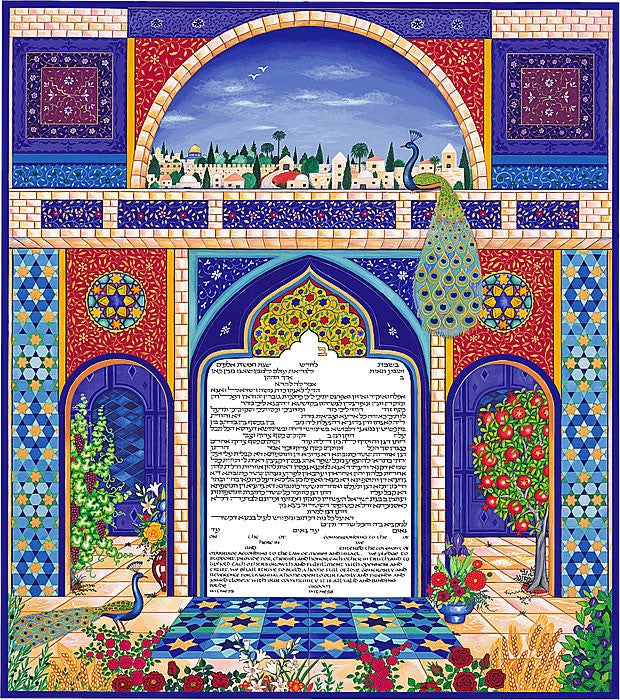
Jerusalem of Peace
If you look closely, you can see that it has 5 planes: First and closest to you, is the balcony, with a pair of nestling doves, and a rose and jasmine climbing out from it on both sides. Next is the main wall, tiled with decorative patterns, most significantly the 16 point star pattern which I brought from Spain in 2007 (from Alcazar palace in Seville, modified just a little). I love this intricate pattern, where many of the lines serve more than one form in a harmonious, interconnected way. Next, is the main courtyard, with the water fountain, the citron tree (etrog), the birds and flower pots, and the wall with the text in the middle, surrounded by grape vines. Looking through the arched passageways to next plane, you can see a fig tree (the Torah was compared to figs in the Midrash) and a pomegranate tree ("as full of mitzvahs as a pomegranate"). Behind the street scene you can see townhouses with their doors and stairways; and finally, at the farthest plane, seen through the arched window - the Western wall, symbolizing our deep connection to the land of Israel. Nearby, the Dome of the Rock and the Dormizion church, symbolize the other two Abrahamic religions. Someday, I hope, all three will live side by side in peace and friendship, in the spirit of Avraham Avinu, who welcomed everyone to his tent. We may have to go through 5 "dimensions" before that miracle happens, but eventually it will happen. As in all my Ketubot, here, too, are the seven species of Israel, symbolizing abundance, richness, and peace. The water and fish symbolize life and "be fruitful and multiply"; the peacocks; the flowers, and the geometrical and floral patterns stand for beauty, order, and harmony. On the tiled panels on both sides of the arched window, the above-quoted Psalm verses are written: "Pray for the peace of Jerusalem; may they prosper that love thee," on the right; and "Peace be within thy walls, and prosperity within thy palaces," on the left. The print comes in all the texts detailed in the list below.

